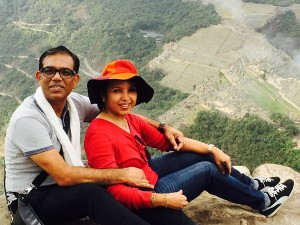The wonders of Peru

The cool and fresh night air of Peru hit us in the face as we exited Lima’s airport. Our tour guide was surprised to learn that we had actually come from India and not USA or UK. The sparse number of Indians travelling to Peru from India can be attributed to the poor connectivity between the two countries.
First we went to see Pachacamac on the outskirts of Lima, a traditional ceremonial centre of the pre-Inca period. We also visited Larco Herrera Museum which houses ancient Peruvian artefacts that are up to 4000 years old. The next day we flew to Cusco, the cultural capital of pre-Spanish Peru. We visited the well-preserved Spanish quarter. Most of the monuments and temples there had been converted into cathedrals and such during the Spanish conquest. However, the tour guides take care to point out the original architecture that can still be seen in some of the buildings. For example, Santo Domingo convent was built over an Inca temple dedicated to the sun and moon. The Saksaywaman Inca fortress in Cusco is an interesting fortress built entirely of huge stones fitted so precisely that they required no mortar. Our evening ended with a Peruvian dance show.
The next day we went by car to the Sacred Valley, a region in Peru’s Andean Highlands, which is on the way to Machu Picchu. It is a long valley which is good for agriculture and has the Urubamba River snaking through it. We also stopped at the Pisac Ruins which looked like the ruins of step farming on a large scale from the Inca period. They also had huts at the top of the farm which were used to keep an eye on the farm and protect it from enemies.
We took a train from the Ollantaytambo train station and found ourselves in the quaint village of Aguas Calientes. We walked to the bus station early morning to catch a bus to Machu Picchu — the real money-maker of Peru. The bus wove through the scenic mountains that were dotted with trekkers and all of a sudden Machu Picchu and Huayna Picchu loomed ahead of us. Huayna Picchu is so popular that the trek needs to be booked months in advance since only around 400 tourists are allowed per day. Upon our descent, we received a crash course on the Inca Citadel, the Palace of the Princess, The Temple of the Sun and so on to prepare us for the ‘lost’ city itself. The ruins indicated how meticulously the city had been planned and how advanced it was in comparison to other Incan ruins. We returned to Cusco via Vistadome, the scenic train ride, in which professional attendants waited on us and entertainment was arranged.
After spending the night in Cusco we departed for Puno in order to visit the world’s highest navigable lake, Lake Titicaca. Interestingly, the border between Peru and Bolivia cuts through this lake. We toured the lake by boat and our first stop was Uros, man-made islands built from totora reeds, which are populated by families living in boat houses. Another island worth visiting in this ocean-like-lake is the Taquile Island.
It seems like eating is a favourite pastime of the Peruvians as it was not uncommon to see restaurants stuffed with people. Roasted guinea pigs, 2,000 local varieties of potatoes and quinoa are the local favourites.
Finally, we returned to Lima and completed our city tour by hitting spots like the Main Plazas, the Presidential Palace, San Francisco Church and the Catacombs.
How to get there
- We took a tour package from a travel agency called ‘Peru Best Tours.
- We took round flights of Delta Airlines and the cost for two people came to about Rs 4,35,000.
Where to stay
- In Lima, we stayed at JW Marriott
- In Cusco, we stayed at Aranwa Boutique Hotel and JW Marriott
- In Aguas Calientes, we stayed at El Pueblo Inkaterra
- In Puno, we stayed at Libertador
- The total cost was approximately Rs 3,94,000 for two of us including boarding, lodging, private guided tours etc.
First Published in deccanherald.com